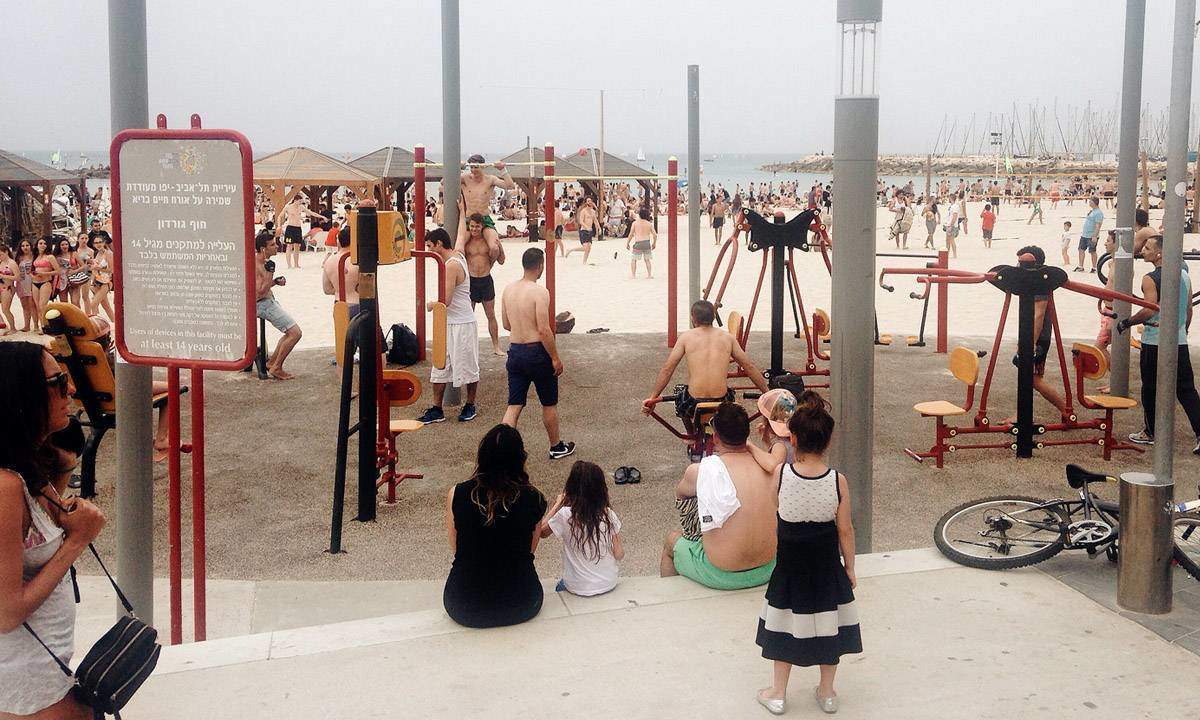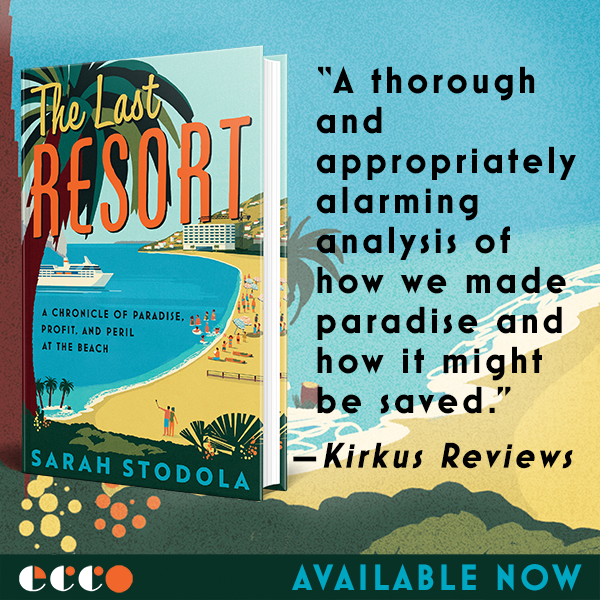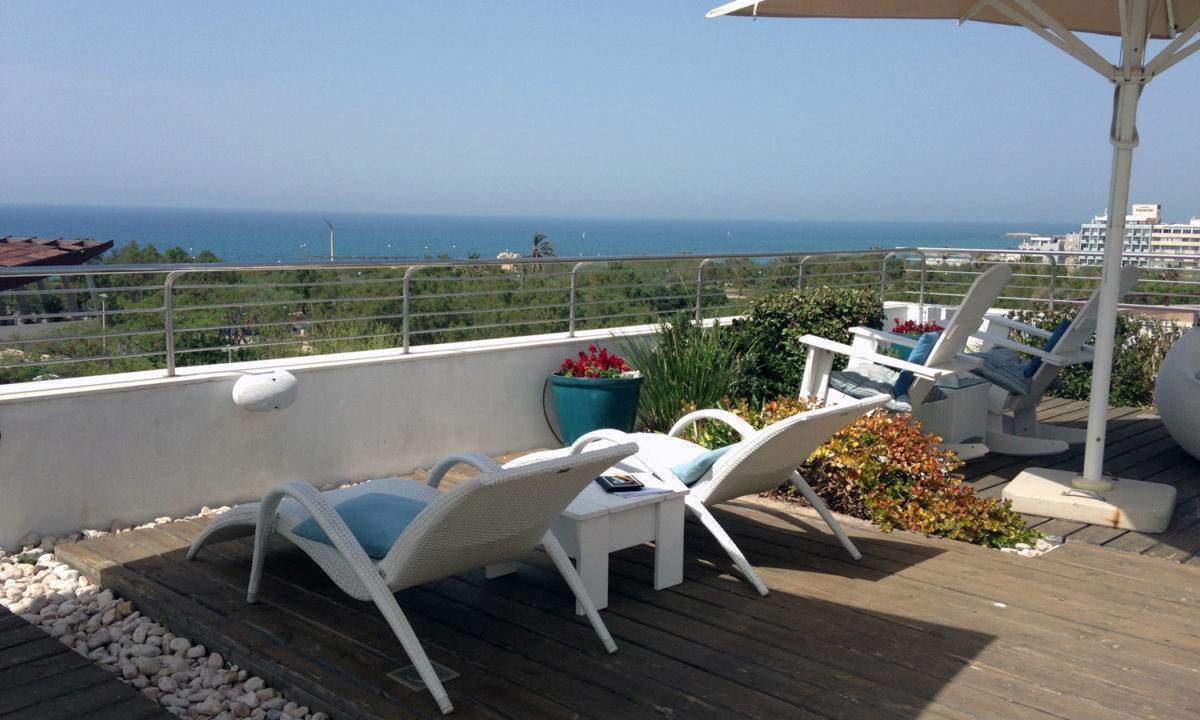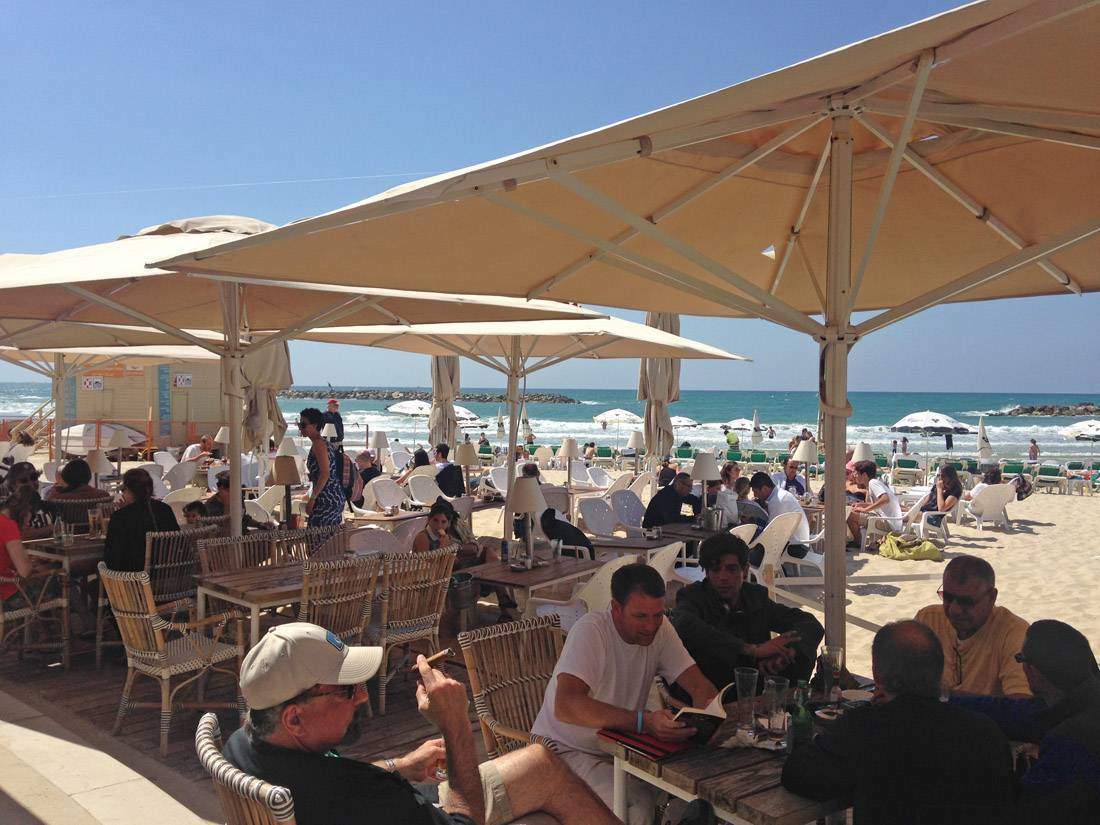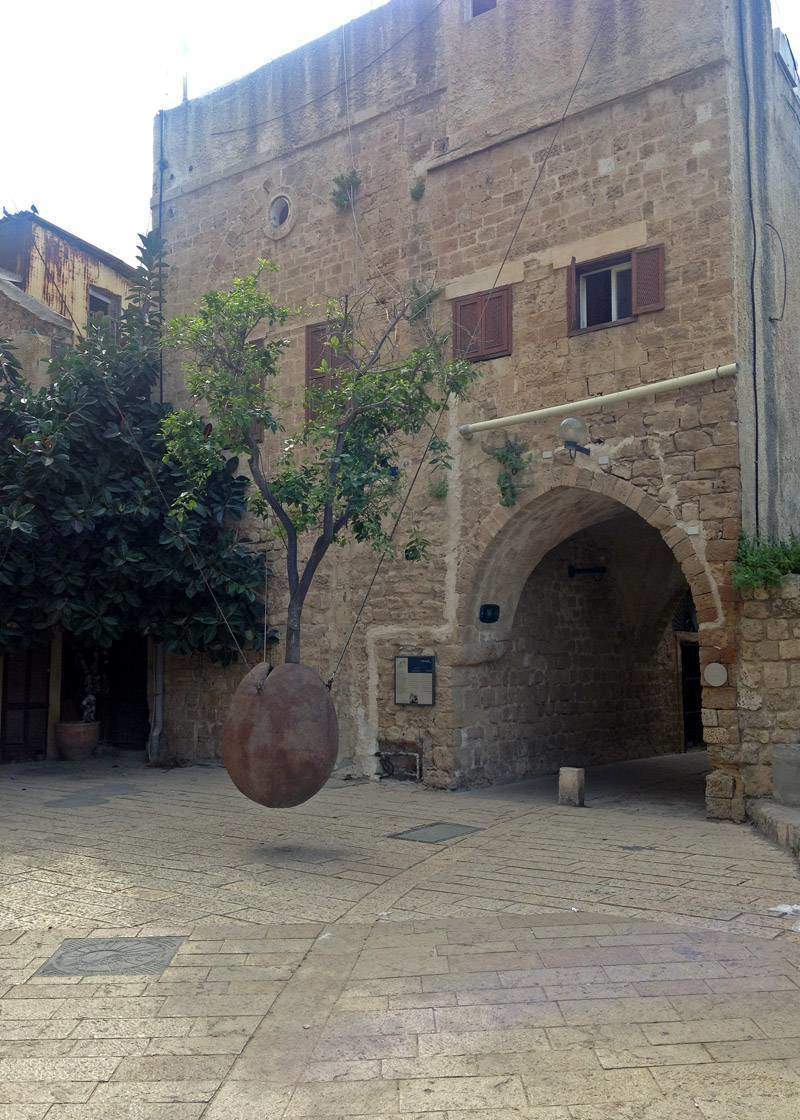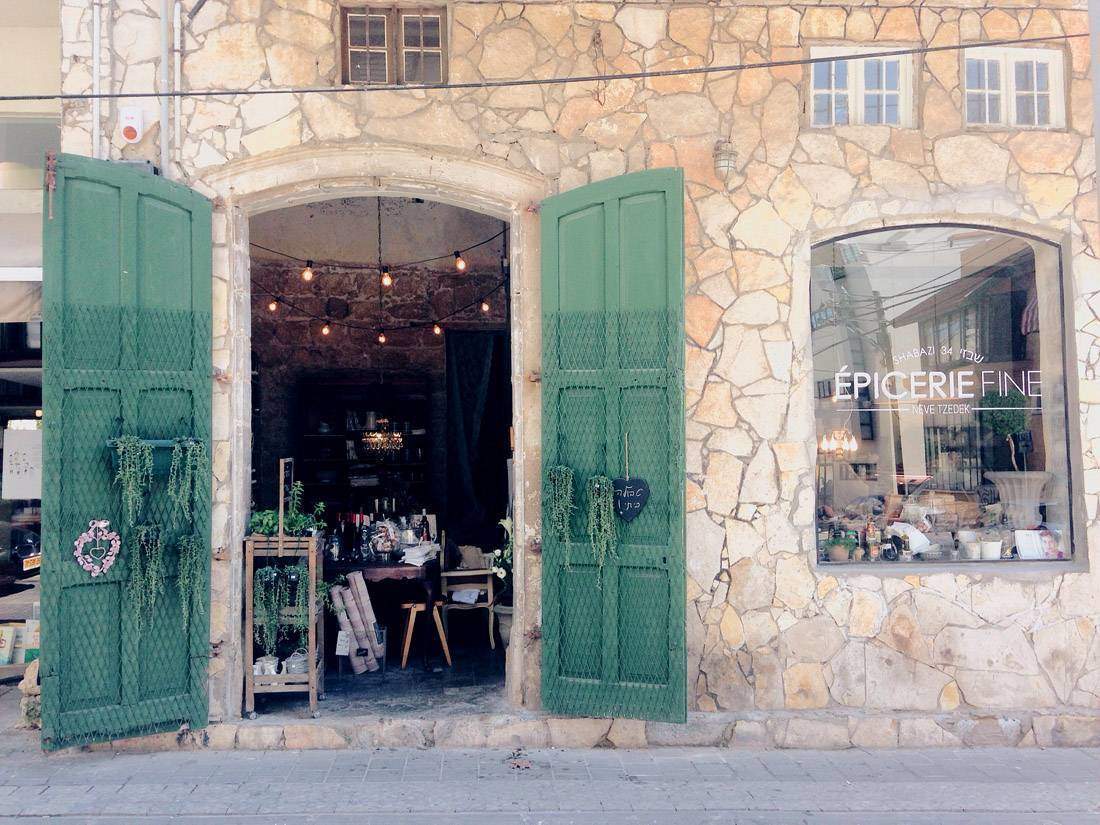My plane from New York landed in Tel Aviv on a Friday afternoon, and after settling into our hotel, my boyfriend and I walked pretty immediately across the street and down to the Mediterranean Sea, that body of water that was until then so firmly planted in my imagination as a glamorous playground of the West. There, along with the volleyball players and the sandcastle builders and the matkot games in progress (it’s sort of like paddleball, and wildly popular), a string of cafes had tables set up right on the sand. We chose one called Gordo, ordered a big iced coffee and a hummus snack, and followed the movements of our very tattooed waitres as we nibbled.
Later that evening, we mulled other options, then again took to the beach cafes, ordered passion fruit cocktails, ordered an Israeli salad, ordered a hookah, shed our shoes. I’d emerged from the terrible New York winter of 2015 into this, temperate bliss, with the sound of waves lapping at the shore and barely a breeze sweeping over my bare shoulders. Down by the water, a trio of friends danced around and messed with their cell phones. Whatever I’d been expecting to find in Tel Aviv, this wasn’t it.
Because this was lighthearted. It was tolerant. It was hedonistic, even.
And I’d been expecting something more…defensive?
The concept I had of life on the ground in Tel Aviv before I actually went there a year ago was formed by the perpetual parade of news reports about the Middle East, about Israel’s place in it, about the willful exceptionalism prescribed by its government. Uncompromising is a word that would have come to mind then, if I’d been doing free association. I thought of the Israeli population as a unified whole in its opposition to Palestinian rights, for example. I suspect that I am a fairly typical American in this way.
I’m not without fault, of course. If I’d read more widely, or more deeply, it wouldn’t have surprised me that Israel’s major metropolitan area would be cosmopolitan, oozing in progressiveness, joyously secular, with raucous nightclubs and an LGBT scene in plain sight. The information is out there, it’s just not the stuff that rises to the top. So for me, it took going there to understand the reality of Israeli life.
Part of that reality, on the flip side, is that not all of Israel looks like Tel Aviv. A recent study published by the Pew Research Center confirms what is apparent when you get there: There are deep ideological divides among Israeli Jews that are growing starker instead of less so. Forty percent of Israel’s people identify as secular Jews, a group that overwhelming wants democratic principles to overrule Jewish law. Ultra-Orthodox Jews, who make up only 8 percent of the population (although their numbers are growing), overwhelmingly believe the opposite, and just as vehemently.
It’s not just politics that separate the different Jewish groups. From the Pew report:
[columns]
[column size=”fifth” last=”no”] [/column]
[column size=”three-fifths” last=”yes”][H]ighly religious and secular Jews inhabit largely separate social worlds, with relatively few close friends and little intermarriage outside their own groups. In fact, the survey finds that secular Jews in Israel are more uncomfortable with the notion that a child of theirs might someday marry an ultra-Orthodox Jew than they are with the prospect of their child marrying a Christian.[/column]
[column size=”fifth” last=”yes”] [/column]
[/columns]
The social world of Tel Aviv belongs to secular Jews, alongside a small but visible Arab population. (A full 25 percent of the Israeli population is not Jewish. About 20 percent is Arab.) This frames the visitor’s experience there, and it cast aside immediately assumptions I’d formed from who knows where that Israel was a country to be visited only in religious pilgrimage. As a person of Christian heritage who has never practiced Christianity and gets nervous in overtly religious settings, I couldn’t have felt more invigorated by Tel Aviv.
Architecturally, Tel Aviv is mostly not a beautiful city, although exceptions dot the cityscape. This is partially a product of the city’s relative youth: founded in 1909, just in time for the architectural blandness that would sweep the world in the middle of the century. Still, Tel Aviv contains the world’s most important assemblage of Bauhaus buildings, designed by Jewish architects fleeing Germany during World War II. These buildings, collectively known as The White City, boast an austere aesthetic that only some would consider beautiful even if most would find them interesting.
And then there’s the wonderful otherness of Jaffa, the well-preserved ancient port area, which in 1950 was absorbed by the Tel Aviv municipality (The city’s official name is Tel Aviv-Yafo). Thousands of years old, today it’s both touristy and local, with fun restaurants and street performers. In Jaffa, I stumbled on one of my favorite-ever pieces of public art, Israeli artist Ran Morin’s “Floating Orange Tree.” Five times a day, the Muslim call to prayer rings out here.
Tel Aviv is intriguing in ways that make up for the lack of overt good looks, and where it shines is when there are people around (people who, incidentally, boast plenty of good looks). It seems like a small miracle that such a glorious stretch of beach can exist so centrally in a major city, part of its very fabric. We stayed in a hotel just a short walk away. From the rooftop lounge, we could toast the Mediterranean. If we headed down to the street and walked away from the water, we were in the Basel neighborhood, with its Continental cafes and its perfectly lit boutiques.
I spent one afternoon out on my own, wandering another popular neighborhood called Neve Tsedek, where Tel Aviv started. Like all fashionable places do eventually, it fell out of favor as the city expanded around it. And then, like many neighborhoods that have fallen out of favor, it eventually became ripe for a creative renaissance. Today, its bungalow houses sit in varying states of refurbishment. Of all the Tel Aviv neighborhoods, this one is the most adorable, with a DIY feel to its shops and wine bars that’s on the verge of graduating to something more polished.
One evening, we sought out Florentin, which in its general vibe is very much like Bushwick, Brooklyn—young people staying out late and declining to look like they’re after a real job. On cue, we emerged onto its main drag and a guy with dreads popped out in front of us on his skateboard. We ate a Mexican restaurant called Mezcal. Another night, we headed to a party hosted by Hennessy on Rothschild, a grand boulevard that during the daytime is fantastic for strolling, and has some of the best boutique hotels in the city. We ordered our drinks and headed out back, where artists were creating a wall mural, graffiti-like, as revelers mulled about below.
Four days after the initial shock of discovering Tel Aviv, we checked out of our own boutique hotel. After a road trip down to Jerusalem and the Dead Sea, we drove back into Tel Aviv on the first night of Passover to find a city bustling with activity on this most important Jewish holiday. This was also a Saturday, by the way. The roads were trafficked and the restaurants were open, just like any other day, except possibly even more so.



